Related Research Articles
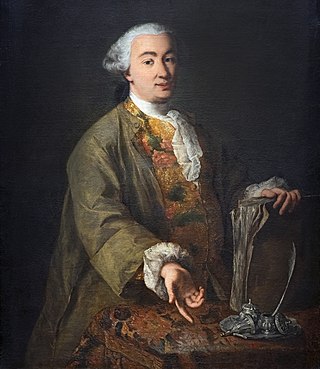
Carlo Osvaldo Goldoni was an Italian playwright and librettist from the Republic of Venice. His works include some of Italy's most famous and best-loved plays. Audiences have admired the plays of Goldoni for their ingenious mix of wit and honesty. His plays offered his contemporaries images of themselves, often dramatizing the lives, values, and conflicts of the emerging middle classes. Though he wrote in French and Italian, his plays make rich use of the Venetian language, regional vernacular, and colloquialisms. Goldoni also wrote under the pen name and title Polisseno Fegeio, Pastor Arcade, which he claimed in his memoirs the "Arcadians of Rome" bestowed on him.
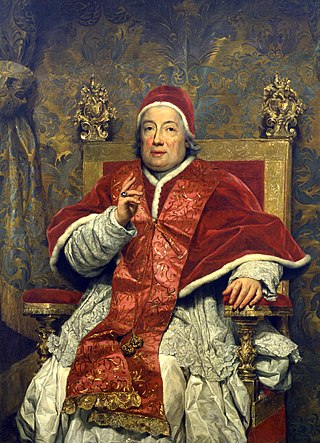
Pope Clement XIII, born Carlo della Torre di Rezzonico, was head of the Catholic Church and ruler of the Papal States from 6 July 1758 to his death in February 1769. He was installed on 16 July 1758.

Carlo, Count Gozzi was an Italian (Venetian) playwright and champion of Commedia dell'arte.

Pietro Alessandro Guglielmi was an Italian opera composer of the classical period.

The University of Florence is an Italian public research university located in Florence, Italy. It comprises 12 schools and has around 50,000 students enrolled.
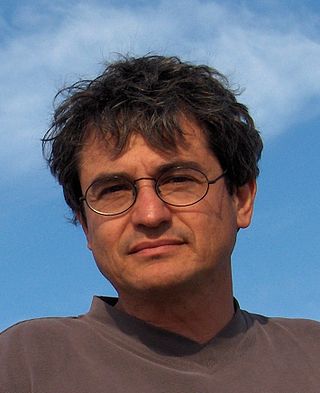
Carlo Rovelli is an Italian theoretical physicist and writer who has worked in Italy, the United States and, since 2000, in France. He is also currently a Distinguished Visiting Research Chair at the Perimeter Institute, and core member of the Rotman Institute of Philosophy of the Western University. He works mainly in the field of quantum gravity and is a founder of loop quantum gravity theory. He has also worked in the history and philosophy of science. He collaborates with several Italian newspapers, including the cultural supplements of the Corriere della Sera, Il Sole 24 Ore and La Repubblica. His popular science book, Seven Brief Lessons on Physics, was originally published in Italian in 2014. It has been translated into 41 languages and has sold over a million copies worldwide. In 2019, he was included by Foreign Policy magazine in a list of 100 most influential global thinkers.

Carlo Gesualdo da Venosa was Prince of Venosa and Count of Conza. As a composer he is known for writing madrigals and pieces of sacred music that use a chromatic language not heard again until the late 19th century. He is also known for killing his first wife and her aristocratic lover upon finding them in flagrante delicto.

Giancarlo De Carlo was an Italian architect.

Carlo Crivelli was an Italian Renaissance painter of conservative Late Gothic decorative sensibility, who spent his early years in the Veneto, where he absorbed influences from the Vivarini, Squarcione, and Mantegna. He left the Veneto by 1458 and spent most of the remainder of his career in the March of Ancona, where he developed a distinctive personal style that contrasts with that of his Venetian contemporary Giovanni Bellini.

Carlo Levi was an Italian painter, writer, activist, communist, and doctor.
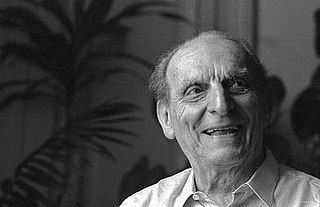
Norberto Bobbio was an Italian philosopher of law and political sciences and a historian of political thought. He also wrote regularly for the Turin-based daily La Stampa. Bobbio was a social liberal in the tradition of Piero Gobetti, Carlo Rosselli, Guido Calogero, and Aldo Capitini. He was also strongly influenced by Hans Kelsen and Vilfredo Pareto.

Carlo Cignani was an Italian painter. His innovative style referred to as his 'new manner' introduced a reflective, intimate mood of painting and presaged the later pictures of Guido Reni and Guercino, as well as those of Simone Cantarini. This gentle manner marked a break with the more energetic style of earlier Bolognese classicism of the Bolognese School of painting.

Carlo Maratta or Maratti was an Italian painter, active mostly in Rome, and known principally for his classicizing paintings executed in a Late Baroque Classical manner. Although he is part of the classical tradition stemming from Raphael, he was not exempt from the influence of Baroque painting and particularly in his use of colour. His contemporary and friend, Giovanni Bellori, wrote an early biography on Maratta.

Gianni Celati was an Italian writer, translator, and literary critic.

George Thomas DiCarlo is an American former competition swimmer who won the gold medal and broke the Olympic record in the 400-meter freestyle event at the 1984 Summer Olympics in Los Angeles. At the 1984 Olympics, he also won the silver medal in the 1,500-meter freestyle.
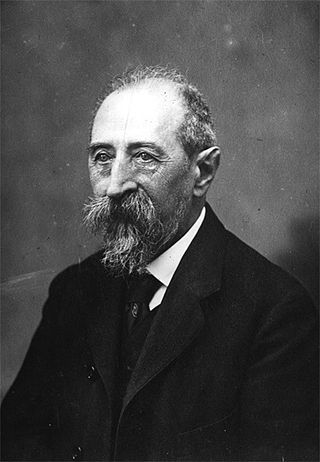
Carlo Emery was an Italian entomologist. He is remembered for Emery's rule, which states that insect social parasites are often closely related to their hosts.

David F. Girard-diCarlo is an American lawyer and former diplomat.
Dominick Leonard DiCarlo was an American lawyer and politician from New York. He was a member of the New York State Assembly from 1965 to 1981; Ronald Reagan's first Assistant Secretary of State for International Narcotics Matters from 1981 to 1984; and a United States Judge of the United States Court of International Trade from 1984 to 1999.
The MBM scandal was an American political scandal of the 1970s which involved members of the Massachusetts Senate extorting money from McKee-Berger-Mansueto, Inc. (MBM), the consulting company supervising the construction of the University of Massachusetts Boston campus at Columbia Point.

Carlo Masci is an Italian politician.
References
- ↑ "James DiCarlo". Simons Foundation. Retrieved 8 May 2017.